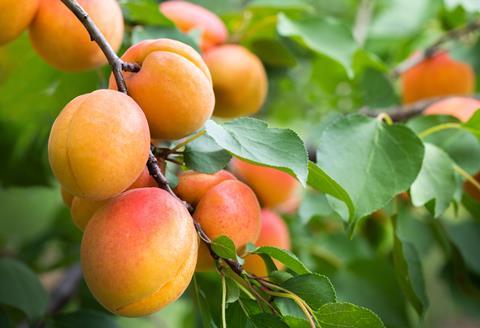Production down in France and Italy, Greece bounces back and Spanish output and acreage increase against the five-year average
Europe’s apricot harvest is expected to weigh in at 523,986 tonnes this year. This is unchanged on last year and 2 per cent up on the five-year average for 2018-2022.

The figures, released at today’s Europêch’, show a decline in French and Italian production against the five-year average.
Compared to last year, Spanish production is set to increase, and Italy is stable, while volumes in Greece and especially France are expected to fall, Europêch’ reported.
This year, mild winter have temperatures affected particular varieties in certain production regions. In some cases, above-average temperatures at the start of spring impacted flowering, not to mention the effects of drought or extreme temperatures in the summer of 2023.
Italy, Europe’s biggest producer, is set to harvest 214,282 tonnes of apricots (a similar amount to last season, but 7 per cent less than the five-year average). This is due to the progressive decrease in planted area seen over recent years.
Spain is expected to harvest 134,352 tonnes of apricots (46 per cent more than last season and 29 per cent up on the five-year average. But there is a significant variation depending on the region.
Murcia, where the harvesting of early varieties has already begun, will see an increase in production. Meanwhile, volumes in other areas are expected to remain largely the same as last year.
Production in Catalonia is forecast to rise 7 per cent compared to 2023 after the effect of the water stress suffered by the trees due to the drought last season.
In the case of France, this is due to adverse weather and this being an alternate bearing year. The country is on course to produce 87,852 tonnes, down 29 per cent on 2023 and 13 per cent below the 18-22 average.
Greek production is set to bounce back this season with a forecast of 87,500 tonnes, 6 per cent down on 2023 but 13 per cent above the five-year average. But there will be a slight decrease in the earliest varieties due to the high winter temperatures.
Overall, after two years of low European production in 2020 and 2021 (around 400,000 tonnes), volumes returned to normal levels in 2022 and 2023 (around 500,000-550,000 tonnes). Production remained far lower than the highs of around 650,000 tonnes in 2017 and 2019, however.
Europêch’ noted that apricots are one of the fruits most affected by climate change. Mild winters, high spring temperatures and late frosts all affect production, but the effects of such weather events are “often difficult to analyse, interpret or understand”.
The vulnerability of apricots to weather volatility of this kind makes production risky, and Europêch’ said it is important to monitor the effects of drought, especially in Catalonia and Roussillon.
The organisation stressed that varietal development and the evaluation of new varieties is key to managing climate challenges in the short and medium term.



